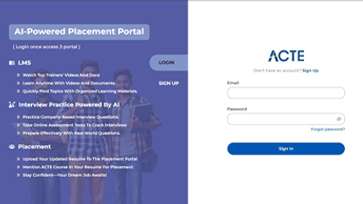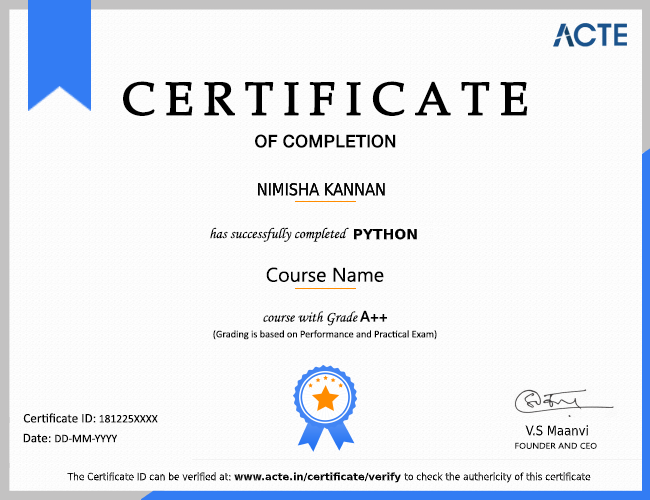Additional Info
CISCO Data Virtualization Training :
It is the goal of Cisco Data Virtualization Training to educate students on Data Virtualization concepts and techniques. Without the need for technical knowledge, it is a flexible data integration approach that can be used to gain insights into business performance. CIS Performance Tuning, CIS Modelling, and CIS Resources Management are also covered in this course. A variety of Real-time projects in various industries will be presented to you.
Using a practical approach, our Cisco Data Virtualization Training course is designed to provide solid fundamental knowledge on core concepts. As a result of such exposure to current industry use-cases and scenarios, learners will be able to improve their skills and execute real-world projects using best practices.
Overview of the Cisco Data Virtualization training course Cisco Data Virtualization is a flexible data management platform that makes easy to access data no matter where it is located in the world. It is possible to search across the network as if it were all in one place using our platform. By having better decision-making capabilities and the ability to adjust to change more easily, your company can reduce costs. All of this can be accomplished without physically moving your data to another location.
We offer the best machine learning training in python that will help you pass the certification exams. Several key concepts are covered in our course: Cisco data virtualization core concepts; cisco information server; resource management; security; CIS monitor; discovery; management; and administration of the Cisco Information Server (CIS). In the course of the training, you'll have access to the full support and assistance of experienced professionals. Enroll in our cisco data virtualization online training at today to take on the new challenges.
Roles and Responsibilities :
Software for Virtualizing :
- Services that are virtualized are managed by a hypervisor.
- Connections between virtual services and external interfaces are made possible by this component.
- A platform management system, a virtualization layer, an API that can be customized, and a health monitoring system should be included.
Functions of Virtual Networks (VNFs) :
- WAN optimization and load balancing are examples of functions that can be used to route network traffic.
- In most branch locations, these services are available to all customers.
- On x86 platforms or purpose-built platforms instead of a dedicated appliance, these functions can run.
- In virtual machines or containers, VNFs can operate.
Options for Virtualization Hardware :
- As far as NFV hardware is concerned, there are two main options.
- The first is a standard x86 server purchased off the shelf.
- The second platform is "purpose-built" for NFV applications.
- Compute, storage, and networking capabilities are all included in purpose-built platforms.
- x86 servers are more efficient, but they add to the overall cost of the solution.
Options for Managing the Situation :
- As compared to on-premise options, cloud-based management is easier to use and more functional.
- Tools that automate network administration are essential for keeping up with changing business demands.
- These include tools for creating, monitoring, and managing services, such as adding and removing services.
Required Skills :
1. Big Data :
Large amounts of structured, semistructured, and unstructured data that can be mined for information are referred to as "big data," a term that is still in flux.
Data volume, data type diversity, and processing speed are often referred to as the "3Vs" with big data.
2. Analytics :
Analyzing large data sets to uncover hidden patterns unknown correlations, market trends, customer preferences, and other useful business information is known as "big data analytics."
3. Prerequisites :
Following courses should have been completed or equivalent knowledge obtained before enrolling in this course to maximize your learning potential.
Tools :
Applications of Data Virtualization In An Introduction to Data Virtualization and Its Use Cases, the following use cases were presented :
- Unlike traditional data warehouses, a virtual data warehouse can be set up much faster than a physical one.
- Traditional and non-traditional data sources can be collected and combined into a single virtual data lake, allowing for data collection and consolidation.
- There are significant improvements over traditional ETL processes thanks to Virtual Data Warehouses and Virtual Data Lakes, as explained in Fundamentals of Data Virtualization.
- There is no need for technical knowledge to use the Data Catalog.
- Using Data Virtualization, Machine Learning, and Blockchain Technologies to Improve Quality Control at McCormick is the subject of the Case Study Data Virtualization Seasons the Machine Learning and Blockchain Landscape for McCormick.
Among the other possible applications are :
- In self-service analytics, data preparation can present its own set of challenges, such as support for a wide range of data types and formats, limited data transformation tools, Data Governance issues, and data sharing constraints, to name a few.
- Users can quickly prepare a dataset from any type of raw data source using data virtualization platforms, which eliminates these problems.
- The Tibco whitepaper explains the technical details of registry-style MDM.
- This is a common problem in a cloud-based Data Management environment, where data sharing is required across multiple clouds.
- There are many different types of data that are collected, prepared, and shared across multiple platforms in an IoT environment, all while adhering to compliance issues.
Frameworks :
Cisco's partnership with Hadoop vendors such as Cloudera, Hortonworks, and Hortonworks. Cloudera, MapR, and other similar technologies. As a result of the collaboration between Hortonworks and IBM, a common framework for true data management has been developed.
Integration Module :
- The Market Guide for Data Virtualization published by Gartner predicts that 35 percent of enterprises will implement DV as a replacement for traditional data-integration techniques.
- 'Data virtualization' is attracting renewed interest as organizations recognize its potential for an expanding range of use cases' according to Gartner.
- "60 percent of organizations will deploy data virtualization software," Gartner predicted in a recent Search Data Management feature.
- Gartner's initial prediction of a 35 percent adoption rate for DV technology has been surpassed.
- Enterprise IT departments' struggles integrating disparate data silos, such as RDBMS and NoSQL, were cited as the reason for the sudden change in the adoption rate of data virtualization technology
- According to Mark Beyer, one of the authors of Gartner's Data Virtualization Market Guide, "data is freely flying all over the place, so what's the point in locking it down"
Certification :
CISCO Data Virtualization online Course offers a wide range of opportunities for job seekers and professionals alike. Moreover, it has a high-demand profile, and most companies are looking for certified professionals in this field of work. To land your dream job, you'll need to obtain certifications. Your performance on the test demonstrates that you have acquired all of the necessary skills to perform critical tasks in the real world with little or no assistance from your subordinates. Certificates are preferred in the hiring process, with large salary packages being offered.
Learners are assisted by Training in obtaining appropriate certifications. Every course we offer comes with a course completion certificate. This certification proves that you are well-trained to handle real-time tasks, and it sets you apart from the rest of the pack. Most MNCs recognize the certification, which can help you land a job quickly.
Benefits :
Data Virtualization Technology Benefits Consider the following for those who are just beginning to explore DV's enormous potential as a robust data integration technology :
- Data is available immediately and without delay. Less "lead time" is required in application development for data availability.
- The possibility of data duplication has been minimized Changes to data sets or applications are easier to make.
It is described in this way in a recent article :
- "[D]ata virtualization allows distributed databases and multiple heterogeneous data stores to be accessed as a single database.
- "Data virtualization servers perform data extract, transform, and integration virtually, rather than physically, using transformation engines."
Pay scale :
Depending on the company's size and reputation, a certified CISCO Data Virtualization professional's salary is 151K per year and salary ranges from 595K to 766K according to Glassdoor Company Standards.































